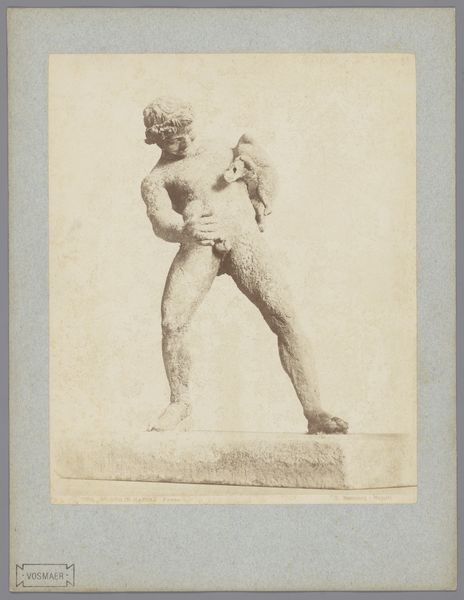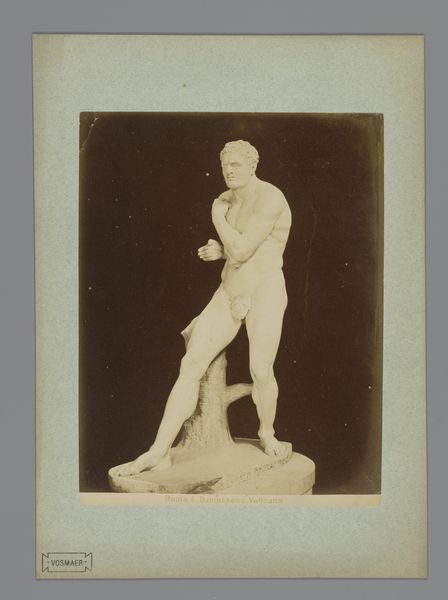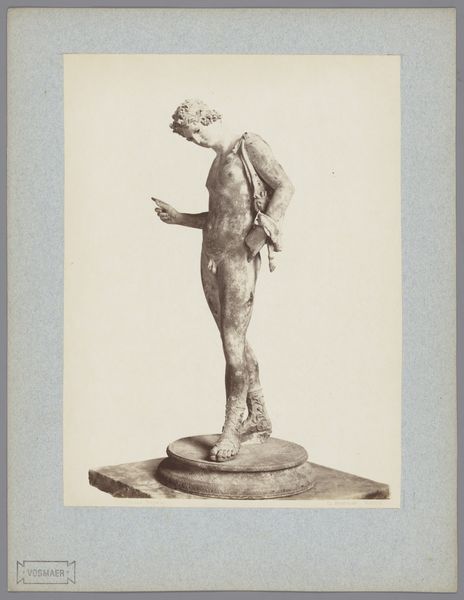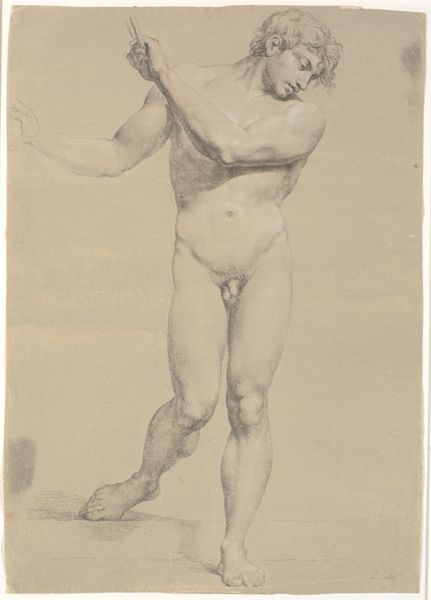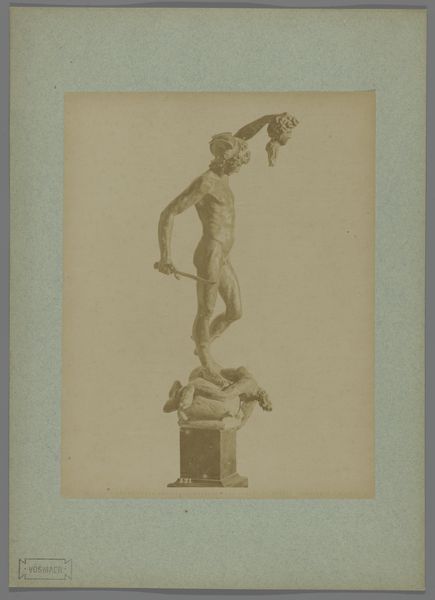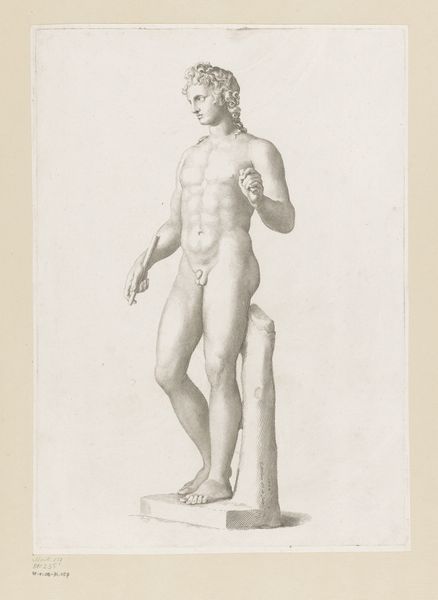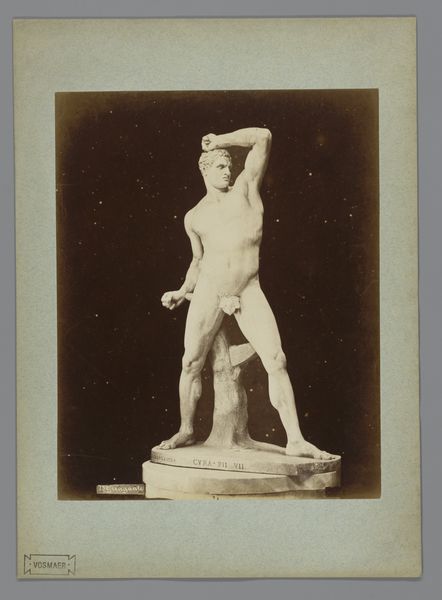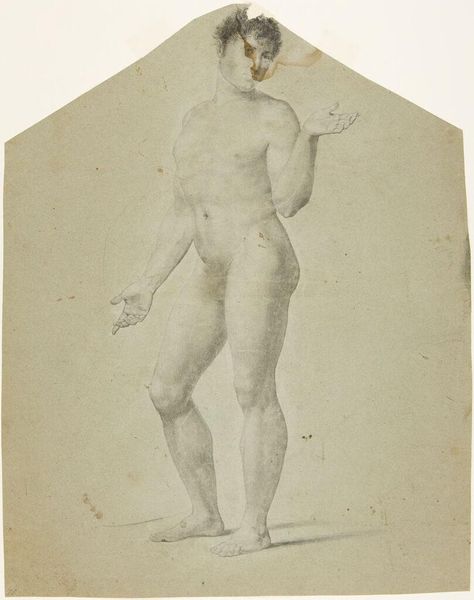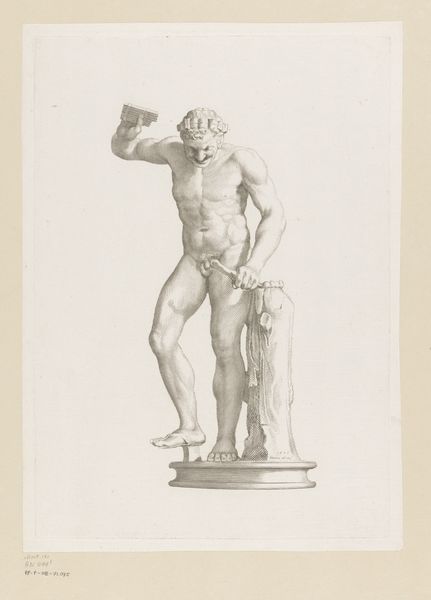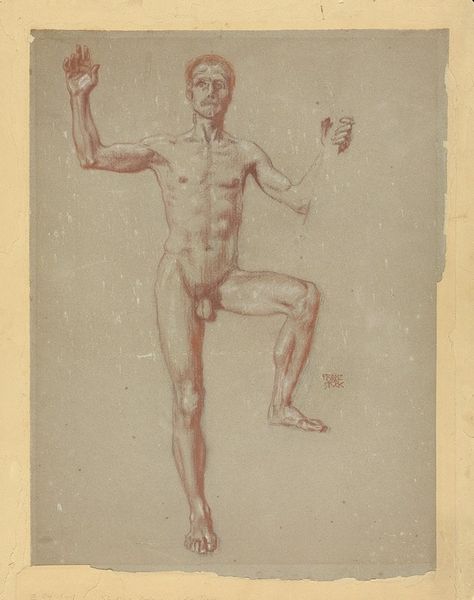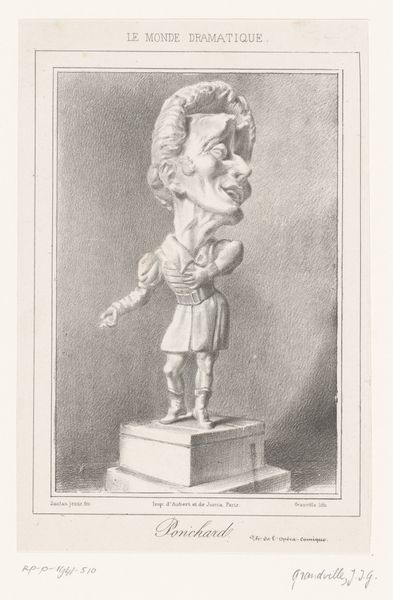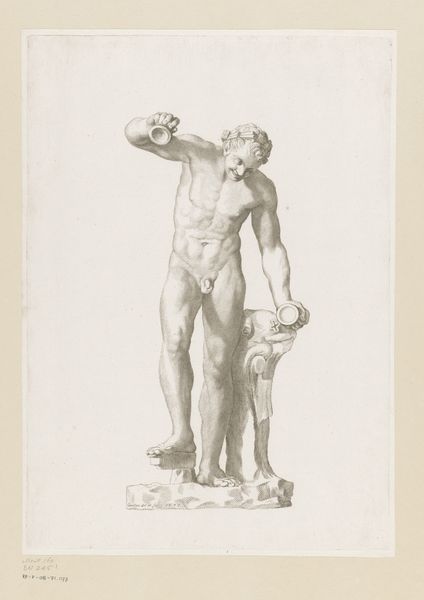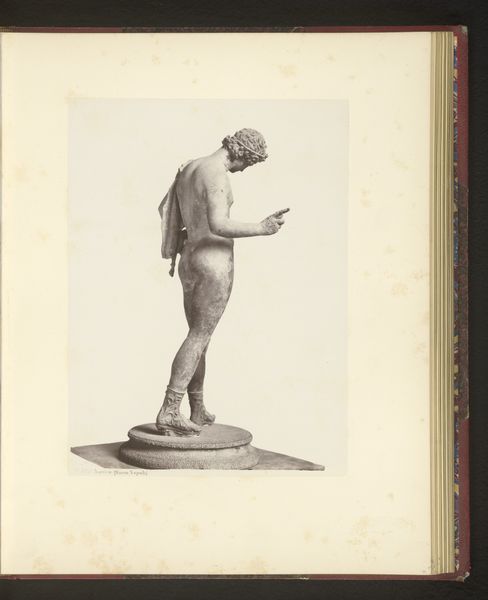
Sculptuur van een dansende faun in het Museo Archeologico Nazionale te Napels 1857 - 1914
0:00
0:00
giorgiosommer
Rijksmuseum
bronze, photography, sculpture
#
portrait
#
aged paper
#
toned paper
#
greek-and-roman-art
#
bronze
#
photography
#
sculpture
#
academic-art
Dimensions: height 253 cm, width 201 cm, height 320 mm, width 250 mm
Copyright: Rijks Museum: Open Domain
Editor: So this is "Sculptuur van een dansende faun in het Museo Archeologico Nazionale te Napels," by Giorgio Sommer, dating roughly between 1857 and 1914. It’s a photograph of a bronze sculpture, and it strikes me how much the aging of the paper enhances the antiquity of the subject. What do you see in this work? Curator: I see a fascinating record of artistic reproduction and dissemination. Sommer's photograph isn't just a neutral depiction; it's a commodity produced for a burgeoning tourist market eager to possess a piece of classical culture. The choice of bronze for the original sculpture speaks to specific ideals about permanence and value. Then we have the photographic print itself – a relatively inexpensive and easily reproducible medium allowing mass consumption of this classical ideal. Editor: So the photograph's value lies not just in depicting art but in its function within a specific economic system? Curator: Precisely. Consider the labour involved: the sculptor’s hand, the bronze casting process, Sommer’s photographic skills, the printing and distribution networks. It reflects a whole chain of production and consumption centered around classical ideals appropriated within a modern, capitalist framework. Editor: That's really interesting, I hadn’t thought about it like that. It really moves away from thinking about the Faun's aesthetic qualities. Curator: Exactly! We should question the distinction often made between ‘high art,’ in the form of the original sculpture, and more ‘commercial’ forms like photography. Here, the photograph serves as a powerful means to experience – and own – antiquity, shaping perceptions of it through its material form and production process. Do you find this way of thinking about it provocative? Editor: Absolutely! I'll definitely be thinking about photography, labor, and material contexts more closely now. Thanks! Curator: My pleasure! Analyzing art through the lens of its material conditions opens up many questions about value, access, and the construction of culture.
Comments
No comments
Be the first to comment and join the conversation on the ultimate creative platform.
